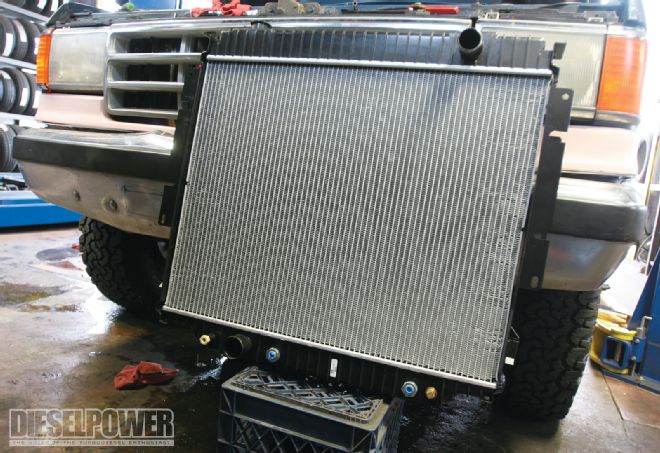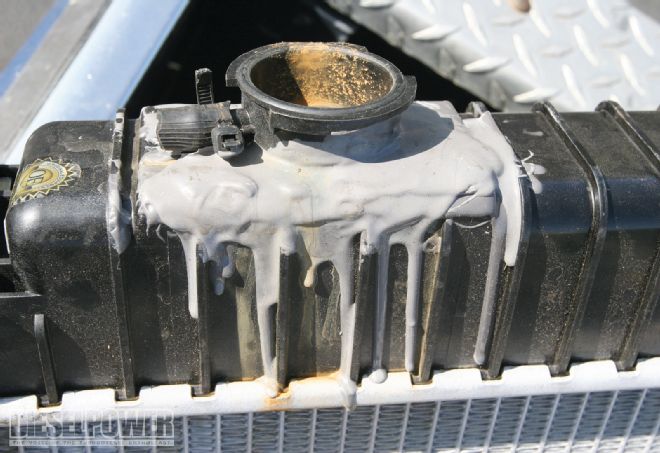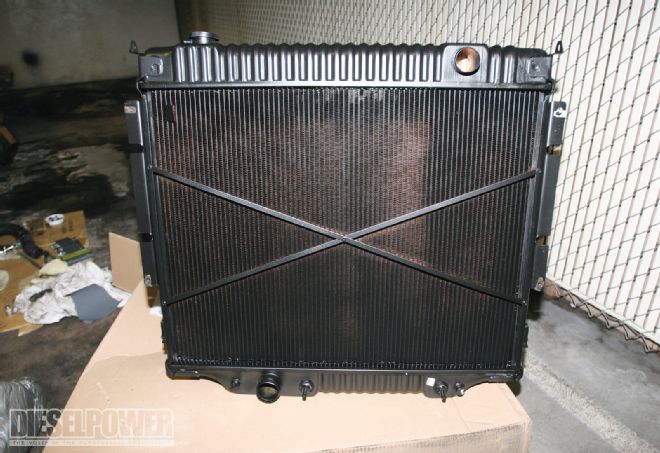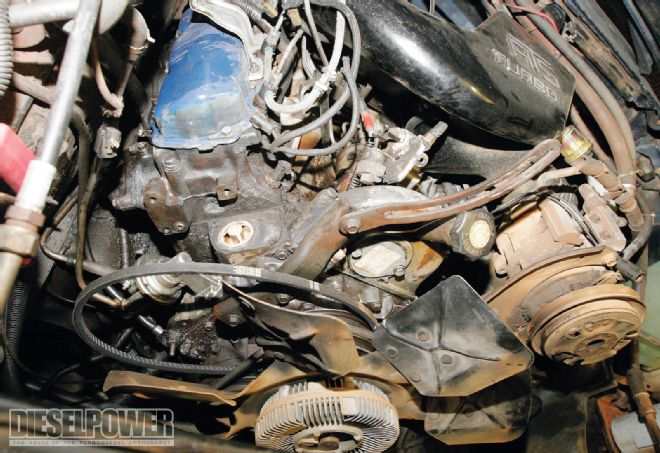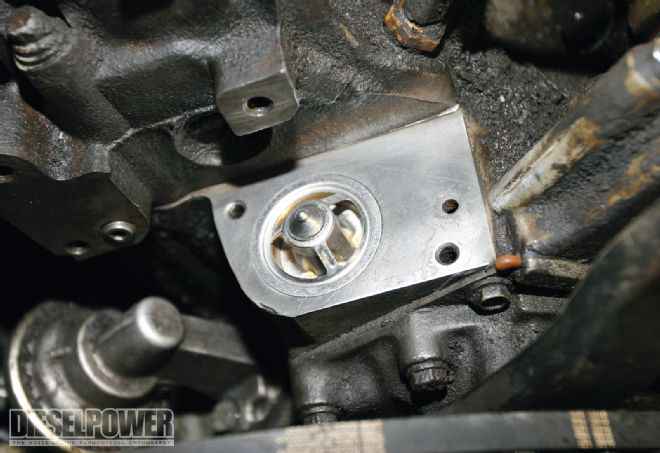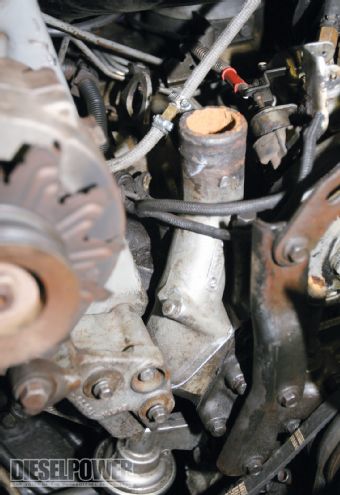One year and $6,610 later, Project 300 is finally a reliable daily driver. To get to this point we've had to battle leaks, squeaks, and caked-on grease, which came with our '87 Ford F-250. Sure we surpassed the $300 purchase price a long time ago, but we have a new perspective when it comes to spending money on an old truck. Instead of thinking of it as sinking money into a clunker, we view it as making $500 monthly investments. For example, instead of a car payment this month, we spent our money on the cooling system. This is a way for a person with little money to own a vehicle without having a large lump of cash. Also consider the savings in licensing, registering, and insuring an older vehicle. Plus, auto recycling is good for the environment and local economy.

| 1987 Ford F250 Buildup left Side Angle
Focus on Cooling
It was only a matter of time before the sediment plugging the holes in our 6.9L's radiator finally quit holding. The result was rusty water all over the engine. Still, we considered ourselves fortunate because not addressing our cooling system could have resulted in water pump failure, getting stranded on the side of the road, or major engine damage. If the cooling system does not operate at the proper pressure with the right coolant, cavitation is likely to occur. Similar to water boiling, cavitation is a condition where air bubbles form next to the cylinder inside the cooling passages after the combustion stroke. Over time, this process of fluid dynamics can eat a hole through steel. Engines with high compression are more susceptible than those with low compression. Later 6.9L cylinder blocks are good because they have thicker metal around the electric block heater compared to the earlier models. The later 6.9L engines also have more metal compared to the later (bored-out) 7.3L. For a more in-depth look at vapor pressure, boiling points, system coolant additives (SCA), SCA test strips, refractometers, and the chemical structure of coolant, read "Keep Your Cool," April '07.

| When our truck's cooling system began acting up, we made our way over to Lucy's Wheel & Tire Center. We brought along the cheapest radiator we could find and two replacement hoses. We had to pull the lower radiator hose since the petcock was clogged. This method was faster, anyway. It wasn't necessary to remove the engine fan in order to take the radiator out. We just unbolted the fan shroud, slid it forward, and then unbolted the radiator.
Stage 1: Original Investment, February 2009
(Including $300 for cost of truck)
Total: $888
Stage 2: Getting It Running, May 2009
(Cost of glow plugs, fuel return line kit, autocross fee, and dyno testing)
Total: $315
Stage 3: Adding A Turbo, August 2009
(Cost of ATS Aurora 2000 wastegated 6.9L/7.3L turbo system, ATS exhaust system, and polyurethane body mounts)
Total: $2,616
Stage 4: Suspension, Tires, Bearings, and Brakes, October 2009
(Cost of calipers, pads, rotors, brake lines, Graham Tool Company specialty tools, seals, bearings, gear oil, alignment, Daystar 2-inch leveling kit, Skyjacker 1/4-inch hex-cut spacer, and BFGoodrich All-Terrain E-load-range-rated 285/75R16 tires)
Total: $1,632
Stage 5: Cooling System Rehab, March 2010
Plastic radiator (broke)
$290
J-B Weld (Leftover from stage 2)
$0
3/8-inch brass plug
$3
Copper and brass radiator
$478
Radiator hoses (top and bottom)
$30
Radiator cap
$6
Be Cool antifreeze, 29 quarts or 7 1/4 gallons
at $30/gallon
$210
Fuel pump gasket
$3
Thermostat housing gasket
$3
Hose clamps
$5
Thermostat
$29
RTV sealant
$5
Electric block heater
$97
Rear antilock brake system (RABS)
Total: $1,159
Project 300 GRAND TOTAL $6,610
